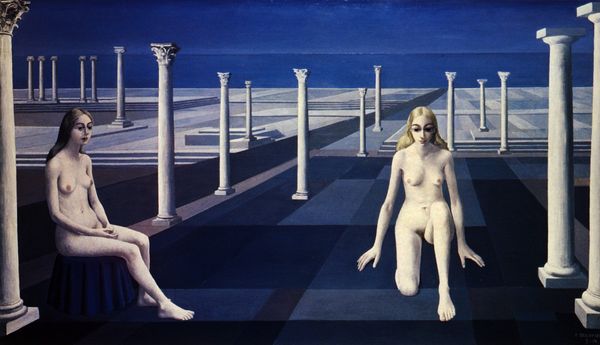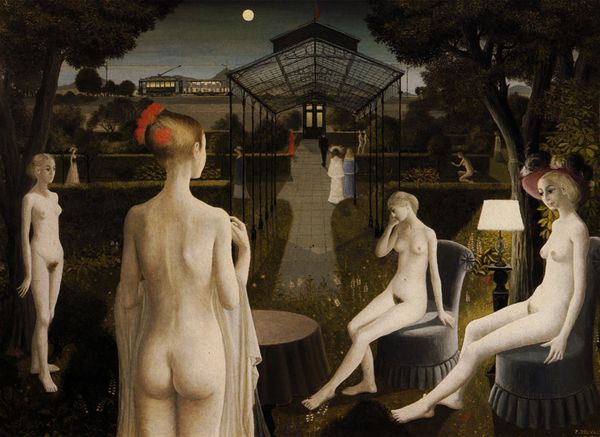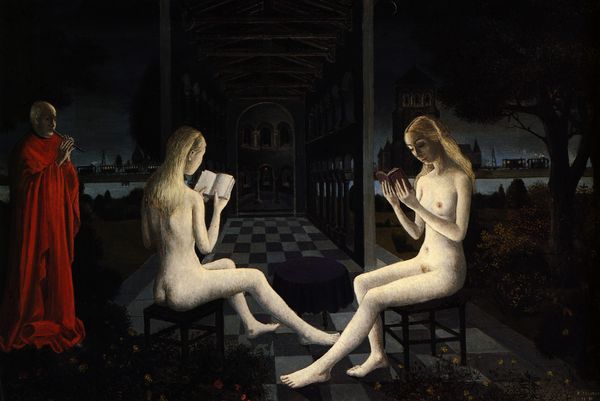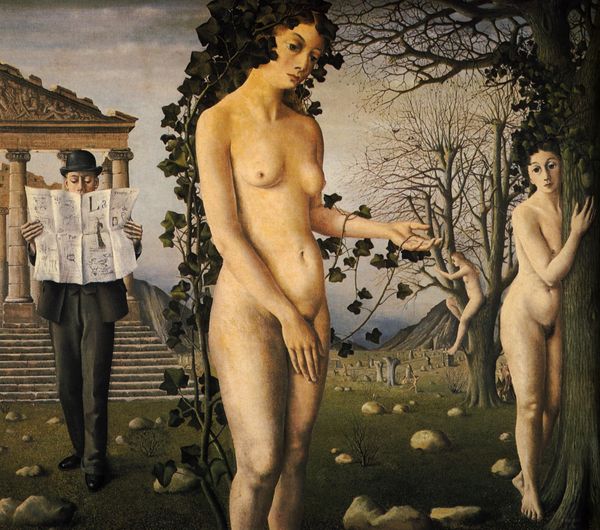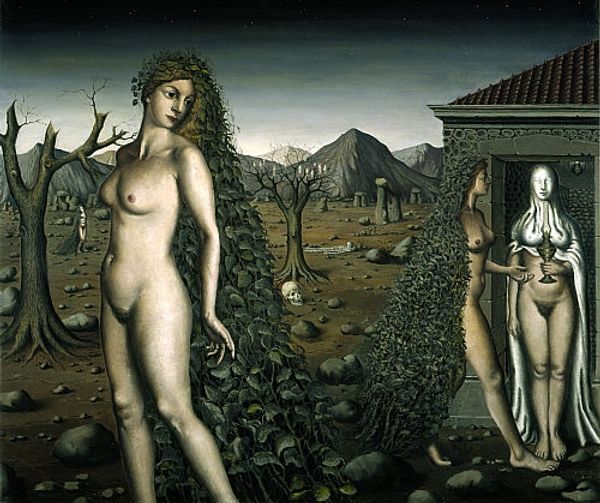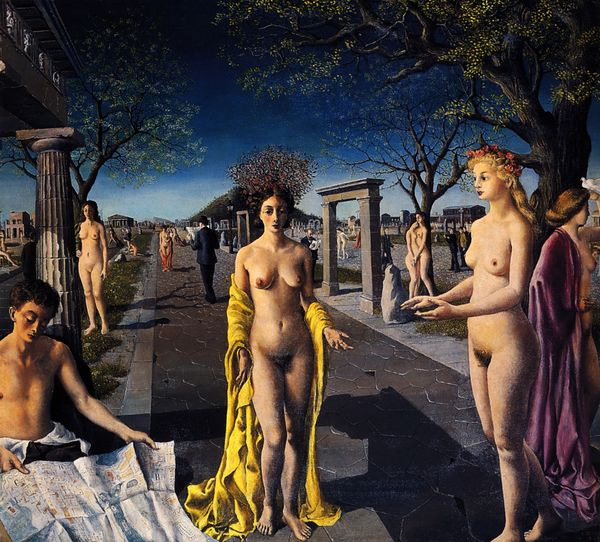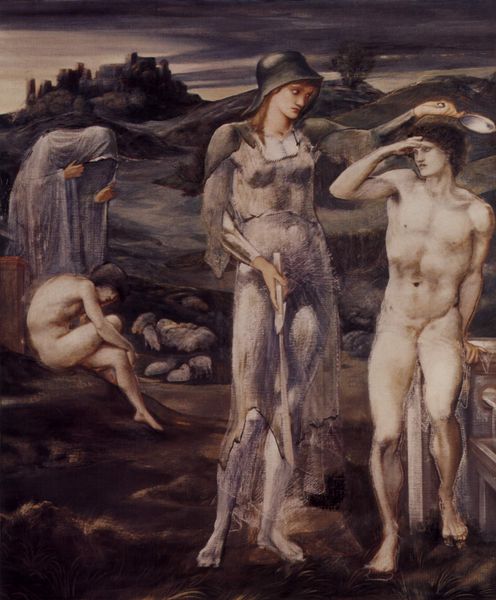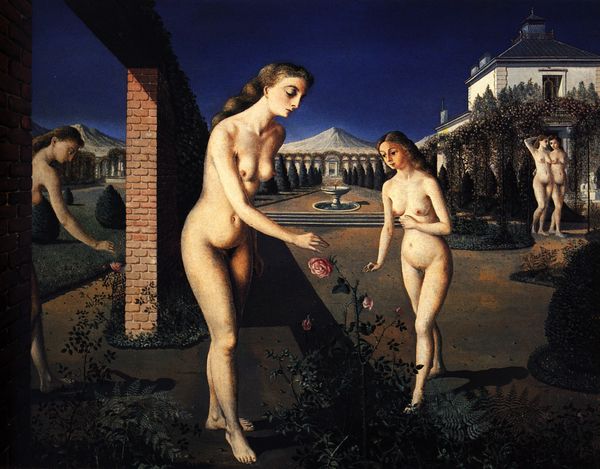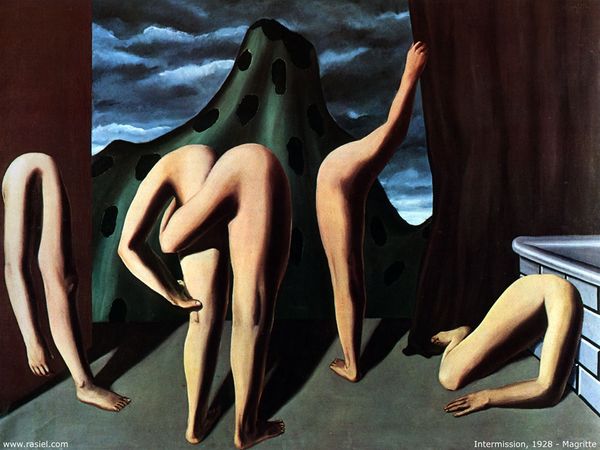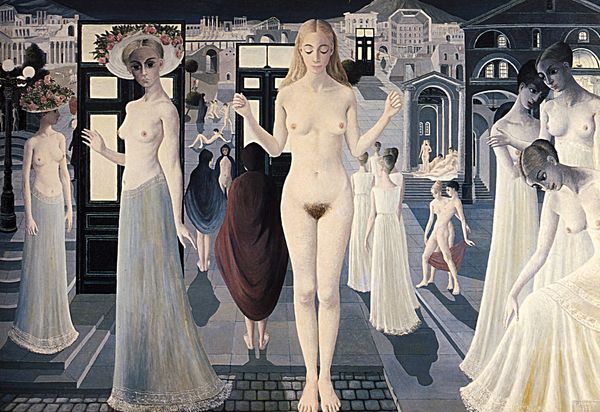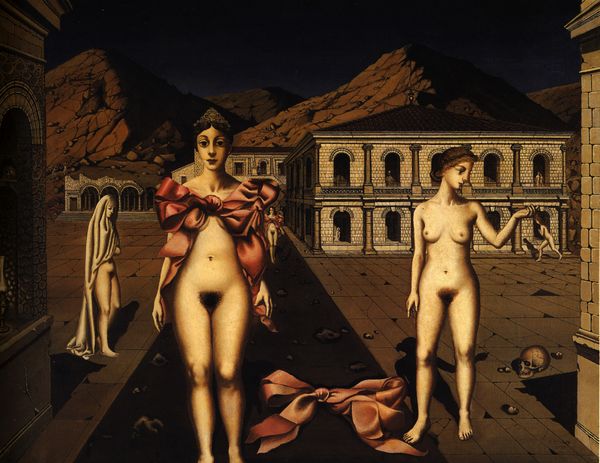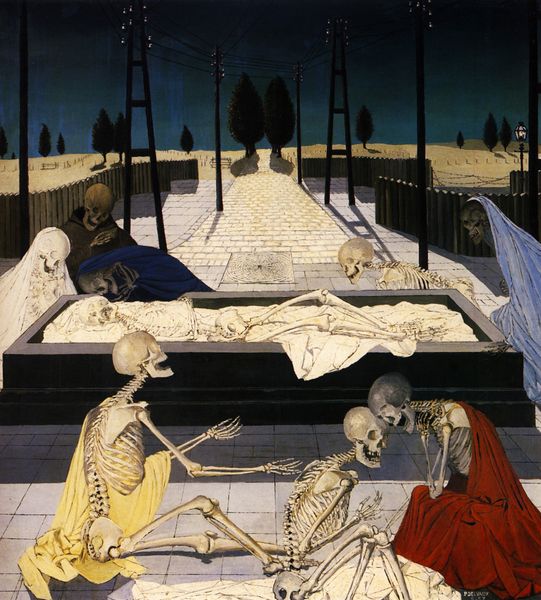
painting, oil-paint
#
painting
#
oil-paint
#
landscape
#
figuration
#
female-nude
#
cityscape
#
genre-painting
#
nude
#
surrealism
Dimensions: 140 x 220 cm
Copyright: Paul Delvaux,Fair Use
Editor: So, here we have Paul Delvaux's "Ruins of Selinunte" from 1973, made with oil paints. The juxtaposition of classical figures with industrial elements gives the artwork an eerie mood. What's your take on it? Curator: Consider the very materiality of Delvaux’s oil paint – the specific pigments he chose and how he layered them to create this somber, dreamlike space. Then, note the interplay of organic and inorganic: those regimented trees against the stark geometry of the railway and classical statuary. He’s deliberately blurring lines between the manufactured world and the natural one. Editor: How does this clash of materials and space reflect a Materialist point of view? Curator: For a Materialist, it is interesting to consider the means of production and display of these cultural objects, for instance. But it’s equally fascinating to explore what wasn’t chosen: the materials and processes Delvaux consciously rejected. Think about the socioeconomic implications of rail travel in the early 20th century compared to that of an artist working with oil paint. How do they relate and oppose each other? Editor: That's a really different way of seeing it! Looking at the art as if the socioeconomic situation reflects his work! So how the use of the classic statue is also clashing to the railway behind. Curator: Precisely. It makes you ponder what these seemingly disparate things share within the socio-economic landscape that birthed them. Art is always a product, but its meanings and purposes shift based on materials and context, both past and present. Editor: So, Delvaux isn't just creating an unsettling image. The materials themselves, along with their social history, actively create meaning? Curator: Exactly! Now we begin to understand how things are created, perceived, and their consumption. What do you think? Editor: I find myself viewing the piece less as a strange dreamscape and more as an archive, capturing and critiquing specific conditions of modernity, production, consumption, and decay. Curator: Yes. Considering our material realities reframes our view from "high art" to that of the maker and the means, allowing us to further deconstruct traditional art interpretations.
Comments
No comments
Be the first to comment and join the conversation on the ultimate creative platform.
